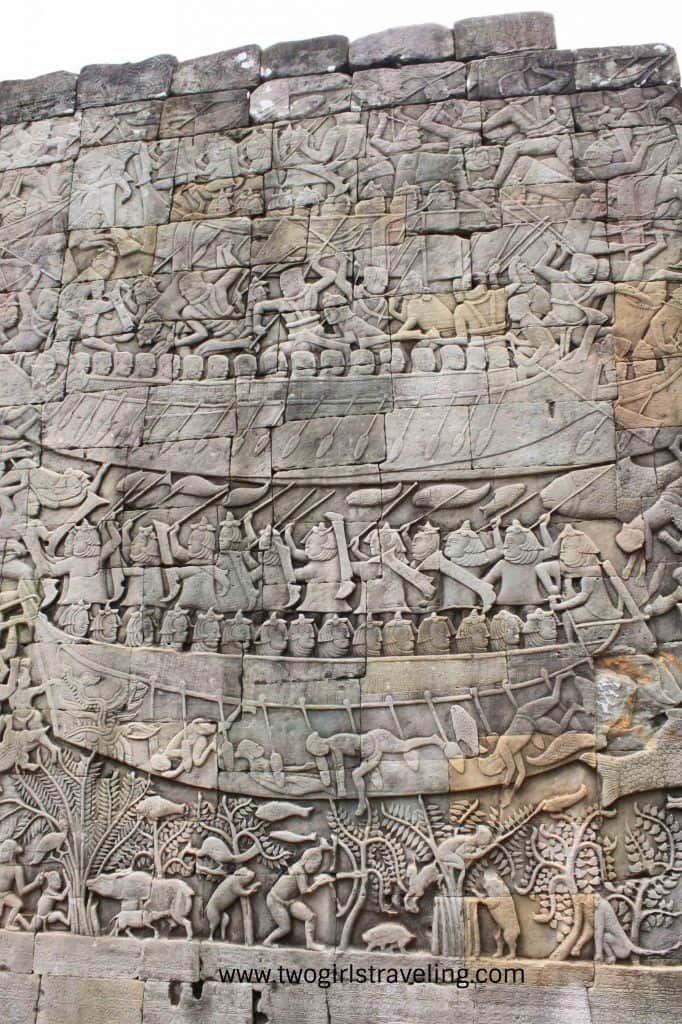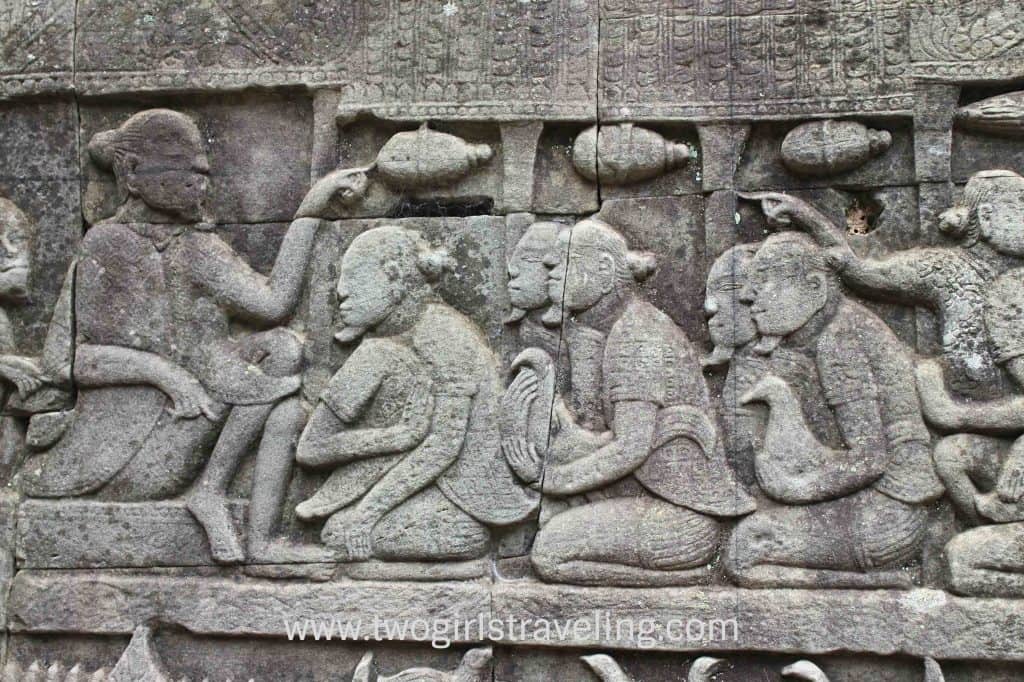just mythology and military victories. They reveal everyday life in ancient Angkor.
I spent last week exploring Siem Reap with my students. There are 13 Texas State University students studying here for a little over 1 month. Cambodia is known for Angkor Wat. It’s an amazing temple – the largest one in the world. But it’s only one of hundreds in the Angkor Archaeological Park.
One of my favorite temples is Bayon. Everyone notices the 216 large, peaceful faces on the 54 towers. Many people believe these are the face of King Jaravarman VII who built Bayon. They definitely represent Bodhisattva Avalokiteshvara – Lokeshvara.

Cambodians believe the number 9 is very lucky so numbers whose digits add up to 9 are particularly lucky.
54 towers – 5 + 4 = 9
216 faces – 2 + 1 + 6 = 9
In addition to these 216 faces, there are an additional 11000 carved figures. Lovely Apsara dancers adorn the pillars and walls.

Bas reliefs circle the ground floor of the temple. The upper levels of the relief show military scenes from a war with the Chams (Muslim enemies from the South). Below the military scenes are scenes from everyday life.

The Cambodian army couldn’t afford real armor so they are featured in loin cloths. You can also tell them by their elongated earlobes. Their enemy, the Chams, all wear uniforms and have helmets with flowers on the top. Chinese mercenaries fighting with the Cambodian army have very slanty eyes and beards.

Bayon’s many faces include scenes from every day life like this marriage proposal, dining scenes, gambling, and even animals chasing Cambodians up trees.

On our first trip, we were so enthralled with the towers and Apsara dancers that we missed the bas-reliefs on the lower levels. Now, I set aside half a day to explore Bayon’s many faces. Each time I visit, I find something new

